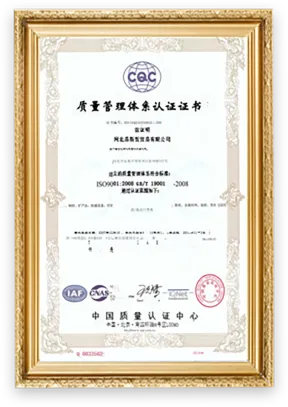Aug . 10, 2024 12:10 Back to list
The Role of Chicken Mesh in Enhancing Structural Integrity in Modern Construction Projects
The Role of Chicken Mesh in Construction
In the world of construction, the materials used can significantly impact the durability, safety, and overall quality of the structures being built. One often overlooked yet essential component is chicken mesh, a type of wire mesh that, despite its name, serves a variety of applications beyond poultry farming. When properly utilized, chicken mesh can contribute greatly to reinforcing and supporting construction projects.
What is Chicken Mesh?
Chicken mesh, also known as hexagonal wire mesh, is made from thin, galvanized steel wires that are twisted into a hexagonal pattern. This robust and flexible material is primarily designed to keep chickens and other small animals contained, but its properties make it suitable for several construction purposes as well. It typically comes in rolls, which allows for easy handling and installation at construction sites.
Applications in Construction
One of the primary uses of chicken mesh in construction is as a reinforcement material. When embedded in plaster or concrete, chicken mesh helps to distribute loads and prevent cracking. This is particularly important in areas prone to movement or settling, where conventional materials could fail. The mesh acts as a tensile strengthening element, making the finished structures more resilient against the forces of nature and time.
Additionally, chicken mesh can be used in fencing applications, providing a secure perimeter for construction sites or specific areas within a project. Its durability and resistance to rust due to galvanization make it a long-lasting option that offers both security and visibility. This is especially vital in urban environments, where construction sites need to be clearly defined to maintain safety for workers and the public.
chicken mesh in construction

Benefits of Using Chicken Mesh
The advantages of using chicken mesh in construction are manifold. First and foremost, it is cost-effective compared to other types of reinforcement materials. Its relatively low price makes it an economical choice for large-scale projects where expenses can quickly add up. Furthermore, its lightweight nature simplifies transportation and installation, saving time and labor costs.
Another significant benefit is its versatility. Chicken mesh can be adapted for various uses, from reinforcing walls and ceilings to creating barriers and enclosures. This adaptability means that builders can rely on a single type of mesh for multiple applications, streamlining their material procurement process.
Moreover, chicken mesh promotes sustainability in construction. Its manufacture requires less energy and resources compared to reinforced steel beams or bars. By incorporating chicken mesh into construction practices, builders can reduce their overall carbon footprint, which is increasingly important in today’s environmentally conscious world.
Conclusion
In conclusion, chicken mesh, while commonly associated with poultry farming, plays a crucial role in the construction industry. Its strengths lie in its reinforcement properties, versatility, cost-effectiveness, and sustainability. As the industry continues to evolve, embracing innovative and efficient materials like chicken mesh can help builders create stronger, safer, and more environmentally friendly structures. Utilizing this often-overlooked material may just lead to significant advancements in the quality and resilience of future construction projects. Whether reinforcing concrete structures or providing secure fencing, chicken mesh proves that sometimes the simplest solutions can have the greatest impact.
-
euro-style-fence-trends-sleek-secure-sustainable
NewsAug.22,2025
-
from-construction-to-art-the-versatility-of-common-nails
NewsAug.22,2025
-
the-art-of-security-razor-wire-sculptures-in-modern-defense
NewsAug.22,2025
-
pvc-coated-wire-mesh-an-eco-friendly-choice-for-sustainable-development
NewsAug.22,2025
-
innovative-uses-of-galvanised-iron-wire-mesh-in-architecture
NewsAug.22,2025
-
the-ultimate-guide-to-installing-gabion-baskets-for-slope-control
NewsAug.22,2025









